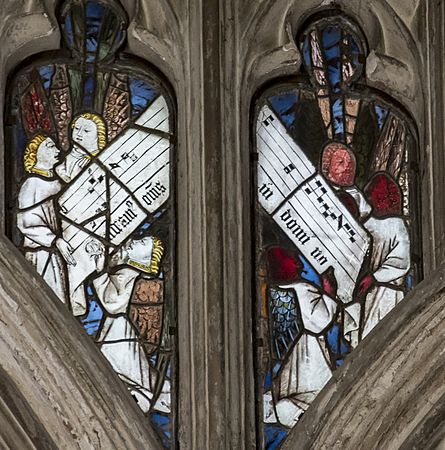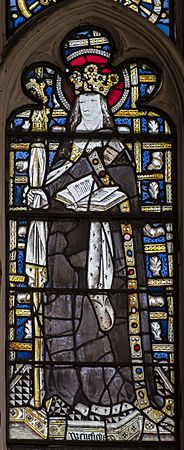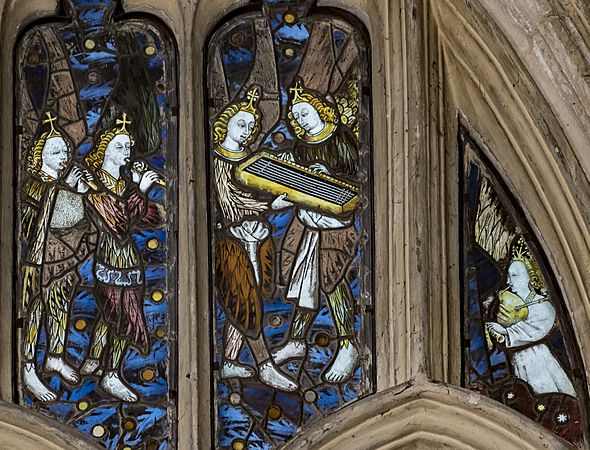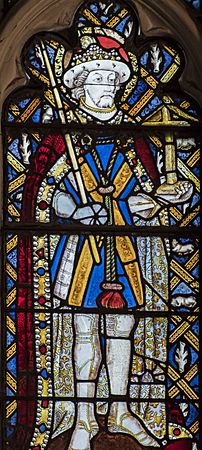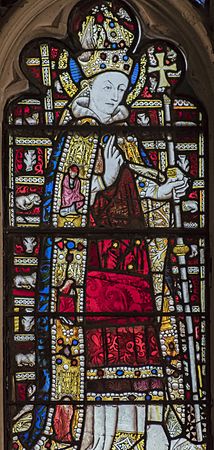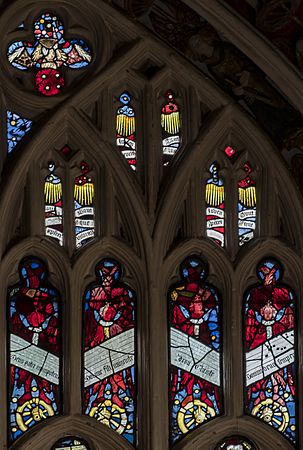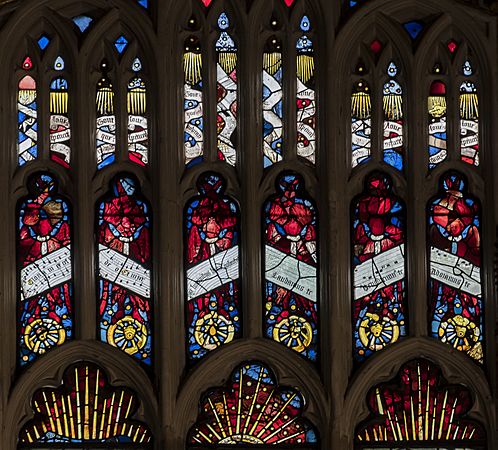John Prudde facts for kids
John Prudde was a super talented English artist who painted on glass in the mid-1400s. He was known as the King's Glazier from 1440 until he passed away. Even though he worked on many important projects, the only one we know for sure still exists is in the Beauchamp Chapel at St Mary's Church in Warwick. His work there is famous for its amazing "glittering effect." He achieved this by adding bright, jewel-like pieces of colored glass into larger panes.
John Prudde's Life
John Prudde first appears in history books around 1426 or 1427. At that time, he was working at Westminster Abbey. Westminster remained his home for his entire life.
In September 1440, he was named the King's Glazier. This important job gave him a special workshop at Westminster Palace. He also received a new gown every Christmas and earned 12 pence a day. This high-profile position helped him get many other well-paying jobs. He worked for private clients too.
We know he created glass art for several important places. These included the Eton parish church and Eton College. He also worked at Greenwich Palace and Shene Palace. Of course, he also worked on the Beauchamp Chapel at St Mary's Church, Warwick. Payments to his helpers suggest he might have also been involved with All Souls College, Oxford and Winchester College.
John Prudde died in either 1460 or 1461. His wife, Elizabeth, later became an Augustinian nun at Holywell Priory in Shoreditch. By 1472, she became the leader of the priory.
The Beauchamp Chapel Windows
The windows for the Beauchamp Chapel are Prudde's most famous and well-documented work. Many people believe this was the most expensive glass project in England during the 1400s. The chapel was built to be the burial place for Richard Beauchamp, 13th Earl of Warwick. In 1447, the Earl's helpers wrote a contract for the glasswork. This contract still exists today.
The contract clearly stated that Prudde had to work from small drawings. These drawings would then be made larger before being copied onto the glass. It also said he must use high-quality European glass, not English glass. The colors had to be rich and bright, not soft. This was different from most English painted glass at the time.
Prudde followed these instructions. He used "jewels" of richly colored glass. Some of these small pieces were framed with lead on their own. Others were carefully placed into holes drilled through larger glass panes. This was a very difficult and slow process. He used this special technique more than any other English artist of that period. This gave the Beauchamp Chapel windows a "glittering effect" that was unmatched in Britain.
His work influenced many other glass artists in the Midlands. The "jewelling" technique became very popular there. One cool part of the designs is the many angelic musicians. They show perhaps the largest collection of different musical instruments on English medieval glass. Another interesting detail is the scrolls in the north window. They have 15th-century musical notation on them.
Prudde's glass originally filled all the chapel windows. However, only some have survived to this day. The main parts of the surviving glass have been moved to the east window. The decorative stone frames (called tracery) of the west window are filled with pieces of glass. These were saved from windows destroyed by a fire in 1694. The tracery of the south window has been repaired a lot. But the north window and all of the east window are still very close to their original condition.
Other Possible Works
It is hard to say for sure if any other existing windows were made by Prudde. Some experts think he might have created the saints under canopies in the antechapel at All Souls College, Oxford. Also, some glass pieces at Fromond's Chantry, Winchester College, might be his. Prudde is linked to both these places by old documents.
In other cases, the idea that he made the glass is based only on how it looks. Art historian Richard Marks believes the special glass with family symbols at Ockwells Manor is probably his work. St Leonard's Church in Bledington, Gloucestershire, has windows with medieval painted glass. Some complete panels there have also been possibly linked to Prudde.
Some people have suggested that the "Royal" window in Canterbury Cathedral was made by Prudde. This idea is based on how it looks similar to the Beauchamp Chapel windows. However, another expert, Madeline H. Caviness, did not find this idea convincing.
Gallery
- Details from the north and east windows of the Beauchamp Chapel


